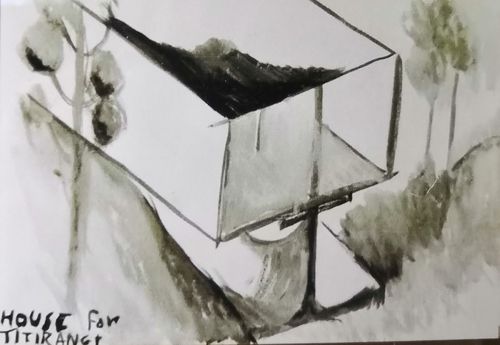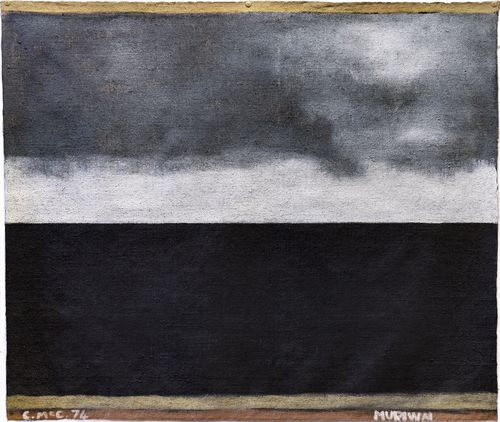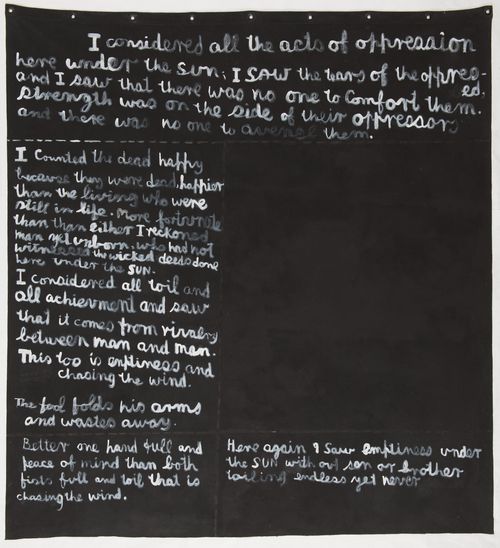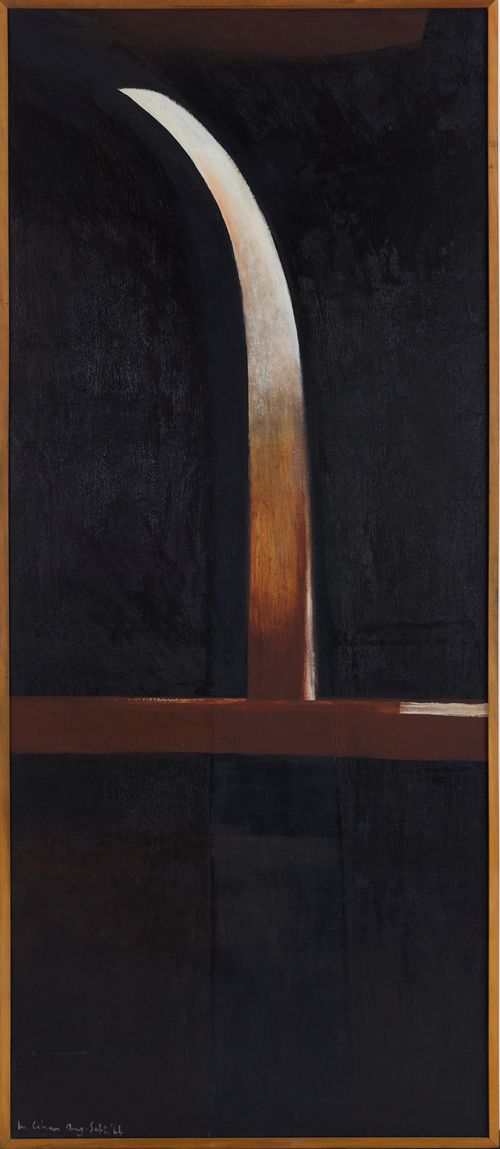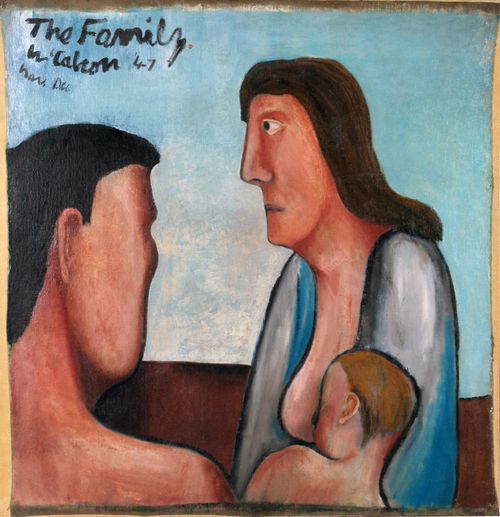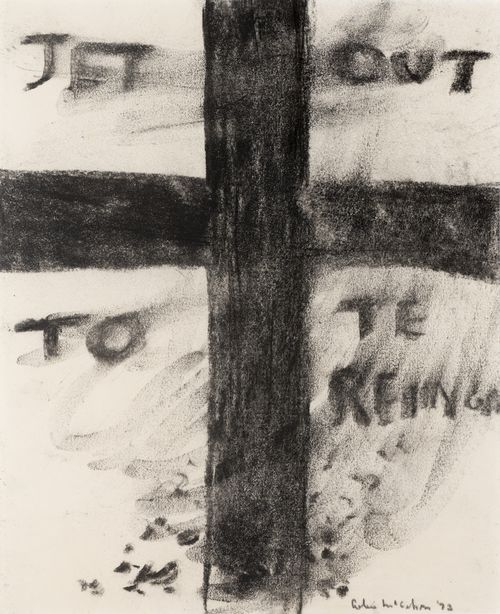As there is a constant flow of light we are born into the pure land

Marti Friedlander, Gretchen Albrecht underneath McCahon's "As there is a constant flow of light ...". Courtesy the Gerrard and Marti Friedlander Charitable Trust, Marti Friedlander Archive, E.H. McCormick Research Library, Auckland Art Gallery Toi o Tāmaki, on loan from the Gerrard and Marti Friedlander Charitable Trust, 2002

Colin McCahon, As there is a constant flow of light we are born into the pure land, 1965, enamel on hardboard, 598 x 1800mm. Collection of Christchurch Art Gallery Te Puna o Waiwhetu. Courtesy McCahon Research and Publication Trust.
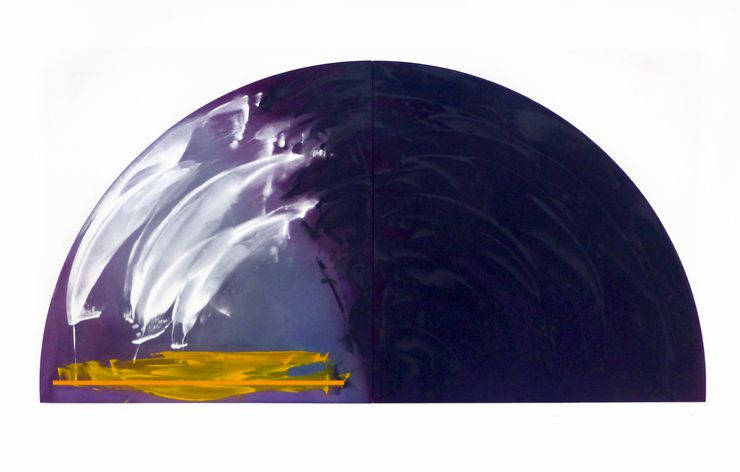
Gretchen Albrecht, Jumping into the Light, 2018, acrylic on canvas on two quadrants, 1225 x 2450mm, Private collection.
Gretchen Albrecht
Over the past six months I have visited Christchurch three times for projects to do with my recently published monograph and an exhibition at Nadene Milne Gallery. As always, I visit the Christchurch Art Gallery (CAG) to see what is currently showing, but most importantly, these three recent visits have been to reconnect with Colin’s painting As there is a constant flow of light we are born into the pure land (1965).
This painting, part of CAG’s permanent collection, is presently hanging beside another McCahon, Tomorrow will be the same but not as this is (1958 – 59). If you stand looking at these two magnificent works and then turn around you will catch a glimpse through to the nearby early New Zealand painting gallery, where Van der Velden’s Mount Rolleston and the Otira River (1893) is hanging. These three speak eloquently together across the time separating them about light and darkness, the New Zealand landscape and its horizons, forces of nature, and their transformation into powerful metaphors.
I say reconnect, because As there is a constant flow of light we are born into the pure land hung on the wall of our Titirangi house for more than ten years and was a daily fixture in the thoughts and minds of both me and my family. My husband, James Ross, had chanced upon the painting at Auckland’s New Vision Gallery in His Majesty’s Arcade in the early 1970s. It had just been delivered when he walked in and found Tine Hos surrounded by wrapping lying on the floor and the painting leaning against a wall in the gallery.
An instant decision was made that we needed to live with this painting and through Tine Hos' generous time payment plan the painting was transferred into our care. At this time our architect friend David Mitchell was designing us a house in the Titirangi bush that my father was to build for us and we got David to alter the plans to make a wall specifically to hang the painting on.
We have always been aware of the origin of the Japanese Zen kōan that forms the body of the text, but it seemed to us the kōan was very universal, and in particular that it had transferred beautifully into the New Zealand context, especially that visual one created by Colin McCahon. His co-opting of this kōan meshed perfectly with his own metaphorical use of light and obvious delight in the written text, and more particularly poetry.
In the central section of As there is a constant flow of light we are born into the pure land, the horizon divides the top rectangle of creamy white from the grey and black below where the kōan is inscribed. This glowing central section seems to push through from the darkness of the two black painted rectangles to left and right.
I’ve always loved the written text across the central panel – it seems such a perfect example of Colin’s calligraphy – executed in this case fluidly with a couple of emendations that are the vital proof of the thought processes of his editing. The words are so strong yet mystical and it seemed to provide, as many of his quotes do, a kind of moral compass pointing the way: the idea of light flooding in and washing over the land (or us) with its illuminating purity and the banishment of darkness by its constant flow.
The ups and downs of the artist’s life in New Zealand meant this painting left us after ten or so years to go to the Christchurch City Art Gallery, something that pleased us enormously, but the painting has left its mark as all great art does.
When this painting floods into my mind I turn to page eleven of Contemporary New Zealand Painters A-M11 where there is a Marti Friedlander photograph of me sitting under it; I am immediately transported back into the past, long gone, but rich in experience and memories of living with this beautiful work.
My connection with Auckland’s west coast with its wild surf beaches, black sand, extraordinary skies and sea horizons goes back to 1964 when I moved to live in Titirangi. The west coast remains a significant place for my family and continues to provide me with nourishment and an emotional connection that informs my painting imagery to this day. Last year I painted Jumping into the Light which has at its core the idea of banishment of darkness by light. It became the precursor for the project I am presently engaged in: a sequence of eight hemispheres responding to the eight Canonical Hours.
[1] Jim and Marry Barr, and Marti Friedlander. Contemporary New Zealand Painters - Volume 1 A-M. Martinborough: Alister Taylor, 1980.
